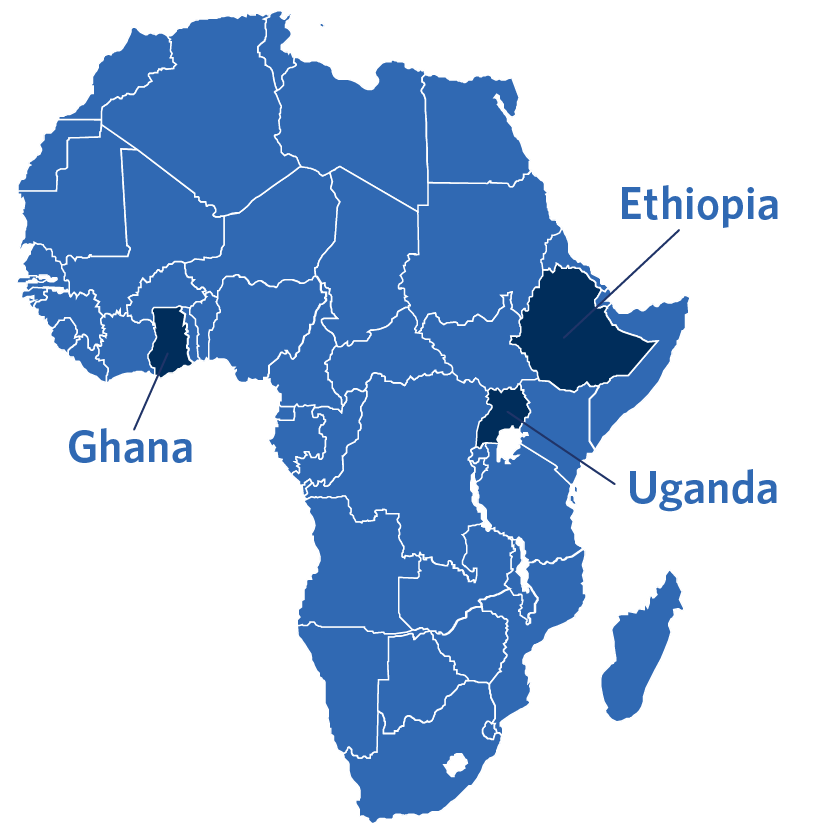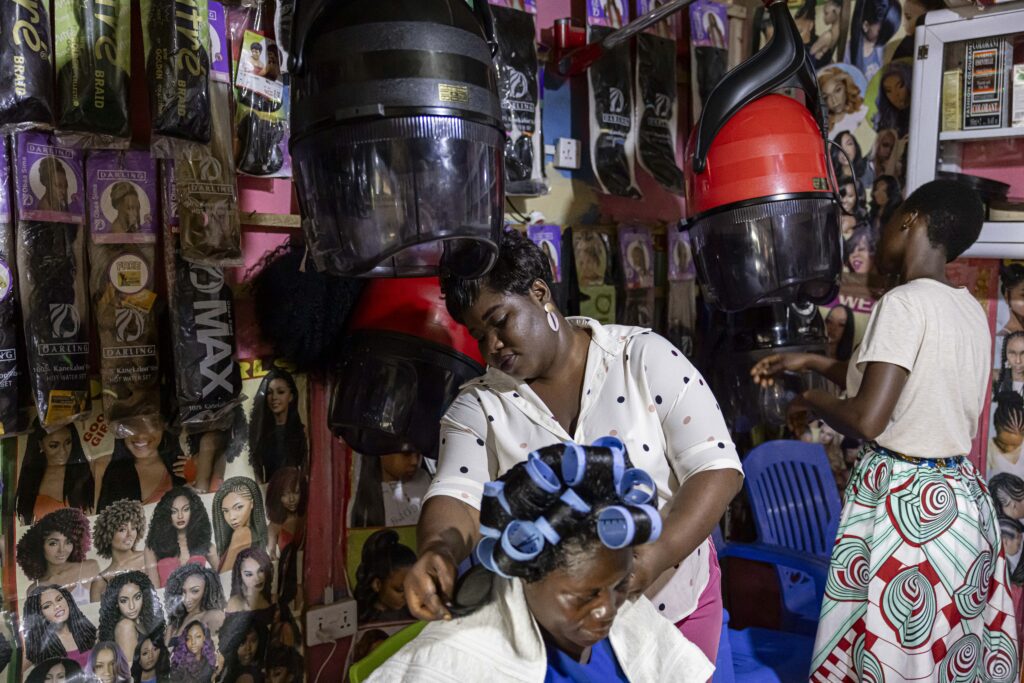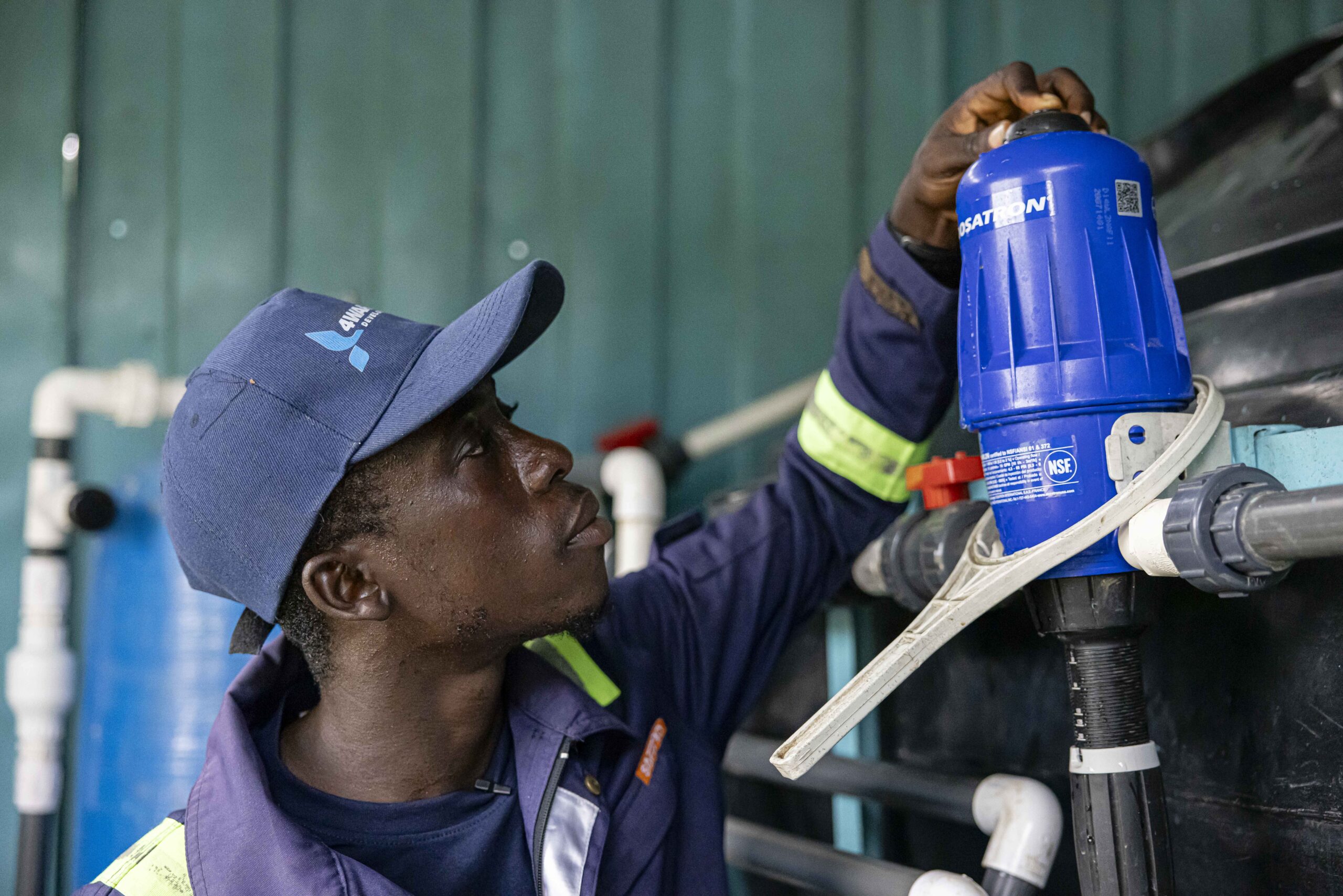Developing Reliable, Affordable and Safely Managed Water Services
“A socially inclusive WASH system in Asutifi North District where different stakeholders are involved in decision-making or the management of WASH is a welcome development.”
– Nana Anim Dankwa Samanhene
Bernard Suapem, a Technical and Maintenance Officer with 4Ward Development, maintains water kiosks in Daboase, Wassa East, Ghana.
The Challenge and Context: Demonstrating Sustainable and Safe Water Services at Scale Matters

Safe water is a crucial component for development and prosperity—driving health, social, and economic outcomes for everyone, including those living in underserved communities. In different parts of the world, changing weather patterns due to climate change, poor water resources protection and management, and limited capacity for the operation and maintenance of water infrastructure result in households, schools, and healthcare facilities suffering from a lack of safe water services. Data gaps, inadequate models for sustainable water service delivery, and poor governance lead to a lack of safe water services at scale across households, schools, and healthcare facilities putting public health, education, well-being, and economic growth at risk.

In some parts of the world, current prioritized interventions may directly conflict with addressing the root causes of safe water service failures. Equally challenging, an overdependence on donor support perpetuates the boom-and-bust cycles of development rather than creating sustainable safe water delivery models.
Delivering safe water requires us to strengthen systems and develop professionalized service delivery solutions. To that end, we are working with communities, civil society, donors, local and national governments, and private sector partners in Ethiopia, Ghana, and Uganda to create solutions that will sustain quality services for one million people in low-income households, schools, and healthcare facilities in sub-Saharan Africa by 2025.
What We Do: Address Systems, Build Sustainable Local Capacity, and Advance Beyond Infrastructure
Our systems-led approach is guided by achieving the most significant impact and enabling local sustainability. Four values guide our work: evidence to support decision-making; sustainability to address the root causes of service delivery; accountability among stakeholders for successes and challenges; and innovation in testing, delivery, business, and financial models.
Our Current Focus
- Ensure residents have access to sustainable safe water services
- Replicate approaches that work both regionally and nationally
- Build a global safe water field
The Safe Water effort is multifaceted and requires capacity building and an equity focus to narrow gaps between those living in disadvantage and others. The work also demands an honest examination of the systemic issues beyond infrastructure to those inputs that create and allow for the continuation of subpar services. We believe progress is truly achievable when health, water, government, civil society, and the private sector collaborate to improve lives in meaningful ways.
Ultimately, our approach:
- Is aligned with the United Nations’ Sustainable Development Goal 6.1: By 2030, achieve universal and equitable access to safe and affordable drinking water for all.
- Helps connect and strengthen local, national, and regional efforts to provide reliable, climate-resilient, and safe water services to households, schools, and healthcare facilities, with a focus on marginalized communities.
- Focuses on issues beyond infrastructure to address systemic challenges related to Safe Water, including water resources management, climate change, policy and regulatory frameworks, and data systems, among others.
- Partners with others to develop and test models that provide safe water services with great value and potential to scale.
- Brings together equity-focused funders to collaborate on replicating solutions for those with the greatest needs.
- Advocates for the shared dividends that come from safely managed water services.
The Impact of the Work: Reliable, Affordable, and Safe Water Services for Every Person, School, and Healthcare Facility Globally
Through investment at the local level, support from the regional and national levels, and the establishment of robust partnerships within the region, providing sustainable and safe water services to households, schools, and healthcare facilities is achievable. Through flexible financing mechanisms, and long-term investments, we can help achieve the United Nation’s Sustainable Development Goal 6.1.
